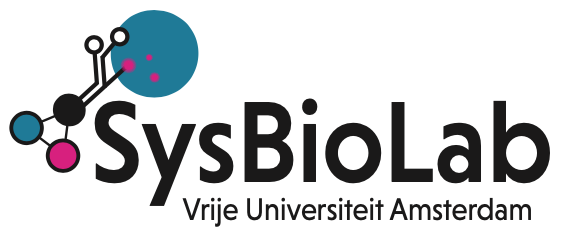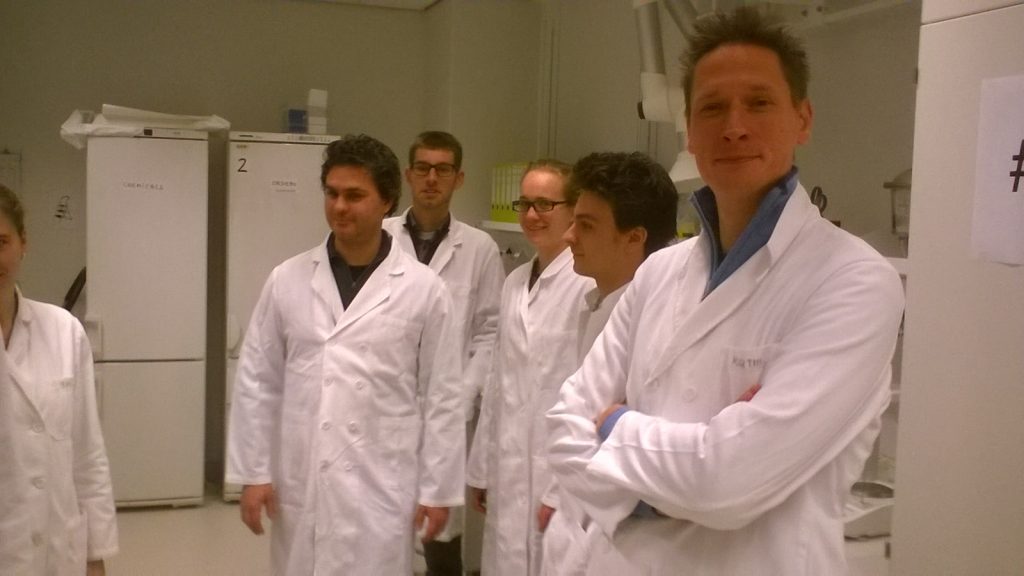Bas was asked to contribute recommendations to the Faculty of 1000, and group members can nominate papers, and help write the recommendation – and get the credits. This month’s recommendation can be seen here.
Article details:
Dynamic control of gene regulatory logic by seemingly redundant transcription factors.
Z AkhavanAghdam, J Sinha, OP Tabbaa and N Hao
elife 2016 Sep 30; 5
DOI: 10.7554/eLife.18458
When the yeast genome was first sequenced in 1996, scientists were puzzled by the seeming redundancy of genes; in fact, the whole genome of Saccharomyces cerevisiae was duplicated during its evolution. Many – not necessarily conflicting – explanations were provided, such as enhancing flux {1}, acting (or not) as backup systems {2}, or leading to differential sensitivity to external cues {3}. This paper by the Hao lab extends work done in the O’Shea lab {4,5} on the dynamics of Msn2/Msn4-mediated transcriptional regulation to provide another functionality – to act as dynamic logical gates. From the paper: “Either Msn2 or Msn4 alone is sufficient to induce the expression of target genes with fast kinetics promoters, constituting what is essentially a biological ‘OR’ logic gate. In contrast, the induction of target genes with slow kinetics promoters requires activation of both factors, forming an ‘AND’ gate.” The work emphasizes the role of time scales in regulation logic, and adds a beautiful example to the collection of functional network motifs {6}.
I would like to thank Dr Johan van Heerden for assistance in the preparation of this recommendation.
References:
{1} Increased glycolytic flux as an outcome of whole-genome duplication in yeast. Conant GC, Wolfe KH. Mol Syst Biol. 2007; 3:129 PMID: 17667951 DOI: 10.1038/msb4100170
{2} The cellular robustness by genetic redundancy in budding yeast. Li J, Yuan Z, Zhang Z.
PLoS Genet. 2010 Nov; 6(11):e1001187 PMID: 21079672 DOI: 10.1371/journal.pgen.1001187
{3} The competitive advantage of a dual-transporter system. Levy S, Kafri M, Carmi M, Barkai N. Science. 2011 Dec 9; 334(6061):1408-12 PMID: 22158820 DOI: 10.1126/science.1207154
{4} Tunable signal processing through modular control of transcription factor translocation. Hao N, Budnik BA, Gunawardena J, O’Shea EK. Science. 2013 Jan 25; 339(6118):460-4 PMID: 23349292 DOI: 10.1126/science.1227299
{5} Signal-dependent dynamics of transcription factor translocation controls gene expression. Hao N, O’Shea EK. Nat Struct Mol Biol. 2011 Dec 18; 19(1):31-9 PMID: 22179789 DOI: 10.1038/nsmb.2192
{6} Network motifs in the transcriptional regulation network of Escherichia coli. Shen-Orr SS, Milo R, Mangan S, Alon U. Nat Genet. 2002 May; 31(1):64-8 PMID: 11967538 DOI: 10.1038/ng881





Recent Comments